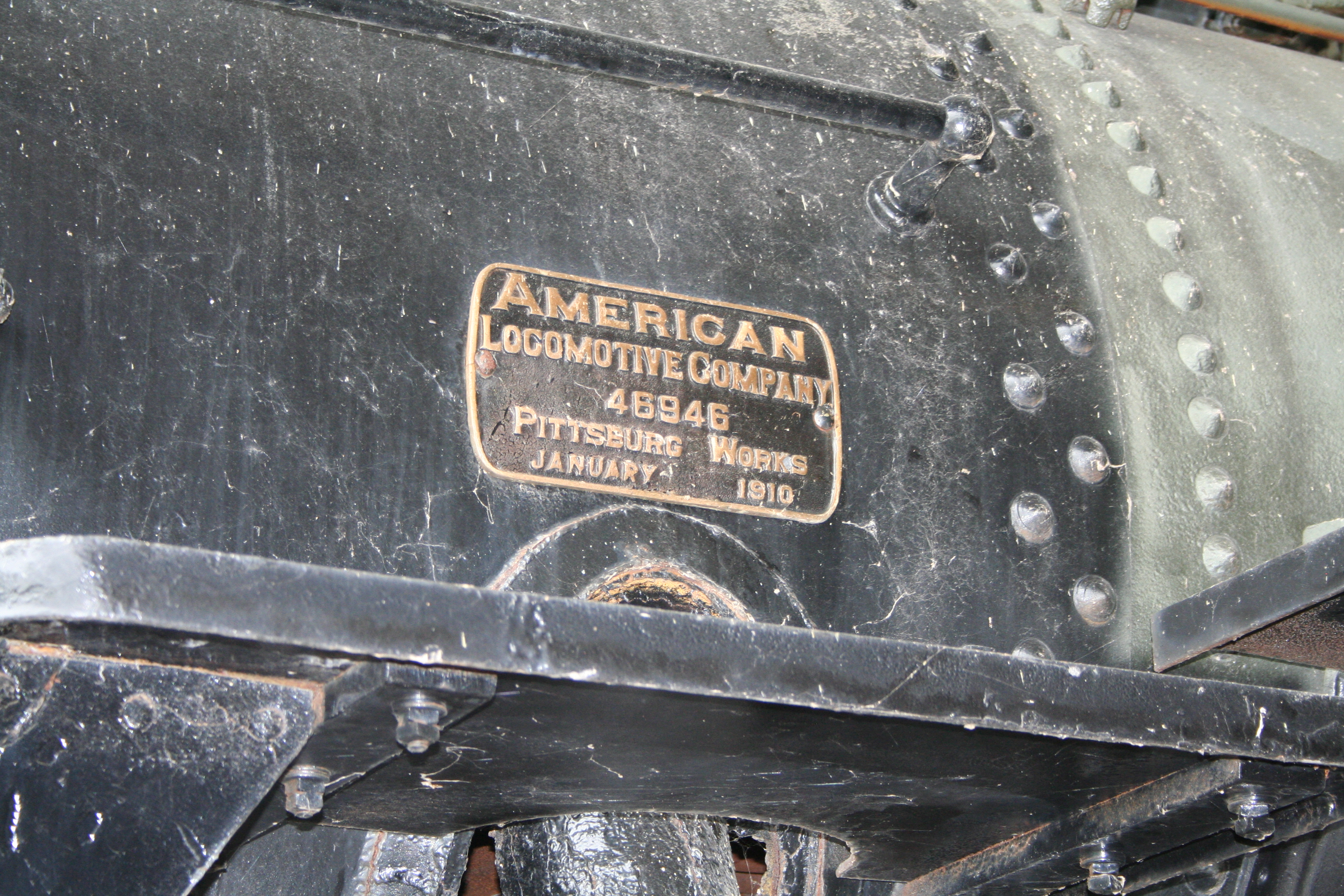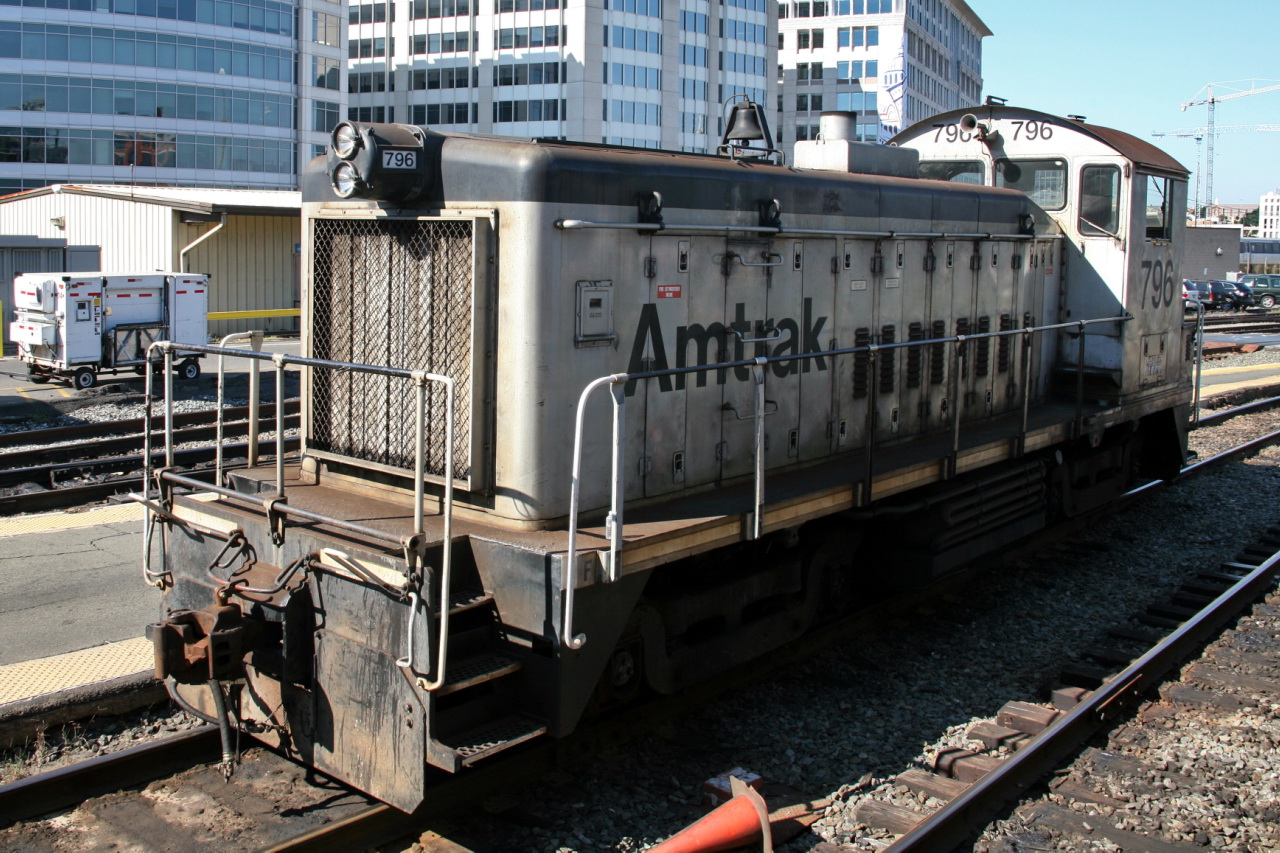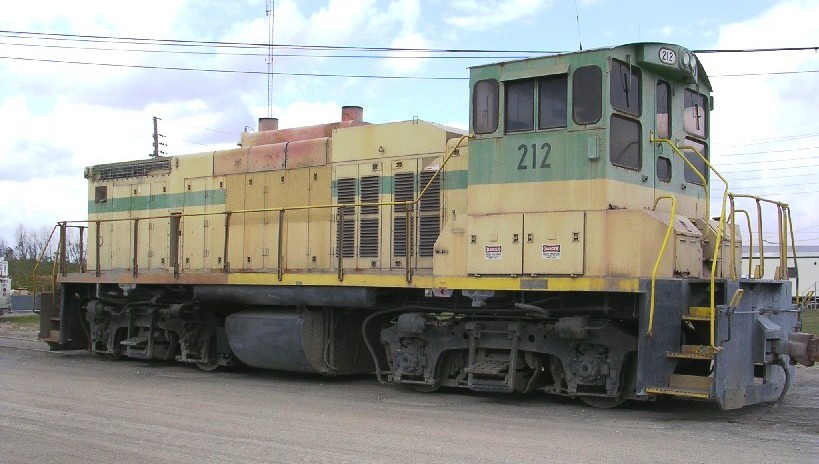|
Maine Central Class O 4-6-0
Maine Central Railroad Class O locomotives were originally intended for heavy freight service. They were of 4-6-0 wheel arrangement in the Whyte notation, or "2'C" in UIC classification. They replaced earlier class P 2-6-0 locomotives beginning in 1903. They were in turn replaced by class W 2-8-0 locomotives for the heaviest freight service beginning in 1910, but remained in use on branch line trains until replaced by diesel locomotives after World War II. They proved so well-suited for branch line service the design was among the last steam locomotives built for the Maine Central. Original class O Class O locomotives were numbered from 351 to 390 as delivered. The first were built in 1903 at the American Locomotive Company (ALCO) plant at Schenectady, New York with builders numbers 27657-27659 and 29029–29030. Builders numbers 30323-30326 and 38170-38173 followed in 1905. Schenectady-built locomotives were equipped with Stephenson valve gear. Sub-class O-1 Builders num ... [...More Info...] [...Related Items...] OR: [Wikipedia] [Google] [Baidu] |
American Locomotive Company
The American Locomotive Company (often shortened to ALCO, ALCo or Alco) was an American manufacturer of locomotives, diesel generators, steel, and tanks that operated from 1901 to 1969. The company was formed by the merger of seven smaller locomotive manufacturers and Schenectady Locomotive Works, Schenectady Locomotive Engine Manufactory of Schenectady, New York. A subsidiary, American Locomotive Automobile Company, designed and manufactured automobiles under the Alco brand from 1905 to 1913. ALCO also produced nuclear reactors from 1954 to 1962. The company changed its name to Alco Products, Incorporated in 1955. In 1964, the Worthington Corporation acquired the company. The company went out of business in 1969. The ALCO name is currently being used by Fairbanks-Morse, Fairbanks Morse Engine for their FM, ALCO line. Foundation and early history The company was created in 1901 from the merger of seven smaller locomotive manufacturers with Schenectady Locomotive Works, Schenect ... [...More Info...] [...Related Items...] OR: [Wikipedia] [Google] [Baidu] |
Walschaerts Valve Gear
The Walschaerts valve gear is a type of valve gear used to regulate the flow of steam to the pistons in steam locomotives, invented by Belgium, Belgian railway mechanical engineering, engineer Egide Walschaerts in 1844. The gear is sometimes named without the final "s", since it was incorrectly patented under that name. It was extensively used in steam locomotives from the late 19th century until the end of the steam era. History The Walschaerts valve gear was slow to gain popularity. The Stephenson valve gear remained the most commonly used valve gear on 19th-century locomotives. However, the Walschaerts valve gear had the advantage that it could be mounted entirely on the outside of the locomotives, leaving the space between the locomotive frame, frames clear and allowing easy access for service and adjustment, which resulted in it being adopted in some articulated locomotives. The first locomotive fitted with the Walschaerts valve gear was built at the Belgian Tubize worksh ... [...More Info...] [...Related Items...] OR: [Wikipedia] [Google] [Baidu] |
Steam Locomotives Of The United States
Steam is a substance containing water in the gas phase, and sometimes also an aerosol of liquid water droplets, or air. This may occur due to evaporation or due to boiling, where heat is applied until water reaches the enthalpy of vaporization. Steam that is saturated or superheated is invisible; however, "steam" often refers to wet steam, the visible mist or aerosol of water droplets formed as water vapor condenses. Water increases in volume by 1,700 times at standard temperature and pressure; this change in volume can be converted into mechanical work by steam engines such as reciprocating piston type engines and steam turbines, which are a sub-group of steam engines. Piston type steam engines played a central role in the Industrial Revolution and modern steam turbines are used to generate more than 80% of the world's electricity. If liquid water comes in contact with a very hot surface or depressurizes quickly below its vapor pressure, it can create a steam explosion. Types ... [...More Info...] [...Related Items...] OR: [Wikipedia] [Google] [Baidu] |
USRA Light Pacific
The USRA Light Pacific was a USRA standard class of steam locomotive designed under the control of the United States Railroad Administration, the nationalized railroad system in the United States during World War I. This was the standard light passenger locomotive of the USRA types with a 4-6-2 wheel arrangement in the Whyte notation, or 2′C1′ in UIC classification. History A total of 106 locomotives were built under USRA control; these were sent to the following railroads: After the dissolution of USRA, the ACL and L&N ordered additional copies of the USRA Light Pacific design, while both the Grand Trunk Western Railroad (GTW) and the Mobile and Ohio Railroad (M&O) also ordered copies in the 1920s... Notable locomotives Atlantic Coast Line 1504 No. 1504 is one of seventy USRA Light Pacifics built by ALCO for the Atlantic Coast Line Railroad (ACL). Classified as a P-5-A, No. 1504 had the capability to haul 10-12 passenger cars at 70–80 mph (113–129 km/h) between Richm ... [...More Info...] [...Related Items...] OR: [Wikipedia] [Google] [Baidu] |
4-6-2
Under the Whyte notation for the classification of steam locomotives, represents the wheel arrangement of four leading wheels on two axles, six powered and coupled driving wheels on three axles and two trailing wheels on one axle. The locomotive became almost globally known as a Pacific type. Overview The introduction of the design in 1901 has been described as "a veritable milestone in locomotive progress". On many railways worldwide, Pacific steam locomotives provided the motive power for express passenger trains throughout much of the early to mid-20th century, before either being superseded by larger types in the late 1940s and 1950s, or replaced by electric locomotive, electric or diesel locomotive, diesel-electric locomotives during the 1950s and 1960s. Nevertheless, new Pacific designs continued to be built until the mid-1950s. The type is generally considered to be an enlargement of the 4-4-2 (locomotive), Atlantic type, although its NZR Q class (1901), prototype had ... [...More Info...] [...Related Items...] OR: [Wikipedia] [Google] [Baidu] |
United States Railroad Administration
The United States Railroad Administration (USRA) was the name of the nationalisation, nationalized railroad system of the United States between December 28, 1917, and March 1, 1920. It was the largest American experiment with nationalization, and was undertaken against a background of war emergency following American entry into World War I. During its brief existence, the USRA made major investments in the United States railroad system, and introduced standardized locomotive and railroad car classes, known as USRA standard. After the end of World War I, while some in the United States advocated for continuing nationalization, ultimately the railroads were returned to their previous owners in early 1920. Background Although the carriers had made massive investments in the first years of the 20th century, there remained inadequacies in rail terminal, terminals, rail tracks, trackage, and rolling stock. Inflation struck the Economy of the United States, American economy, and when i ... [...More Info...] [...Related Items...] OR: [Wikipedia] [Google] [Baidu] |
ALCO S-4
The American Locomotive Company (often shortened to ALCO, ALCo or Alco) was an American manufacturer of locomotives, diesel generators, steel, and tanks that operated from 1901 to 1969. The company was formed by the merger of seven smaller locomotive manufacturers and Schenectady Locomotive Engine Manufactory of Schenectady, New York. A subsidiary, American Locomotive Automobile Company, designed and manufactured automobiles under the Alco brand from 1905 to 1913. ALCO also produced nuclear reactors from 1954 to 1962. The company changed its name to Alco Products, Incorporated in 1955. In 1964, the Worthington Corporation acquired the company. The company went out of business in 1969. The ALCO name is currently being used by Fairbanks Morse Engine for their FM, ALCO line. Foundation and early history The company was created in 1901 from the merger of seven smaller locomotive manufacturers with Schenectady Locomotive Engine Manufactory of Schenectady, New York: *Brooks Locomot ... [...More Info...] [...Related Items...] OR: [Wikipedia] [Google] [Baidu] |
ALCO S-2
The American Locomotive Company (often shortened to ALCO, ALCo or Alco) was an American manufacturer of locomotives, diesel generators, steel, and tanks that operated from 1901 to 1969. The company was formed by the merger of seven smaller locomotive manufacturers and Schenectady Locomotive Engine Manufactory of Schenectady, New York. A subsidiary, American Locomotive Automobile Company, designed and manufactured automobiles under the Alco brand from 1905 to 1913. ALCO also produced nuclear reactors from 1954 to 1962. The company changed its name to Alco Products, Incorporated in 1955. In 1964, the Worthington Corporation acquired the company. The company went out of business in 1969. The ALCO name is currently being used by Fairbanks Morse Engine for their FM, ALCO line. Foundation and early history The company was created in 1901 from the merger of seven smaller locomotive manufacturers with Schenectady Locomotive Engine Manufactory of Schenectady, New York: *Brooks Locomot ... [...More Info...] [...Related Items...] OR: [Wikipedia] [Google] [Baidu] |
EMD SW9
The EMD SW9 is a model of diesel switcher locomotives built by General Motors Electro-Motive Division between November 1950 and December 1953. Additional SW9s were built by General Motors Diesel in Ontario Canada from December 1950 to March 1953. Power was provided by an EMD 567B 12-cylinder engine, producing . 786 examples of this model were built for American railroads and 29 were built for Canadian railroads. Design and production The SW9 was EMD's successor to the SW7. Like the SW7, the SW9 retained a power output of 1,200 hp and the same general design. It differed in lacking the upper hood vents found in the SW7, and with the installation of a 567B engine to replace the 567A found in the SW7. Starting in October 1953 a number of SW9s were built with the 567BC engine. In December 1953, one locomotive, Weyerhaeuser 305, was built with a 567C engine. The 567C was subsequently installed on the SW9's successor, the SW1200. In addition to the single units produced, ten ... [...More Info...] [...Related Items...] OR: [Wikipedia] [Google] [Baidu] |
EMD SW7
The EMD SW7 was a diesel switcher locomotive built by General Motors Electro-Motive Division between October 1949 and January 1951. It was powered by a 12-567A engine. The SW7 replaced the earlier 1,000 horsepower NW2 switcher in EMD's catalog. A total of 489 SW7 locomotives were produced. The majority of the SW7s were built by EMD Plant #3 in Cleveland, Ohio. In addition, 15 TR4 cow-calf paired sets were produced. SW7 production was discontinued in 1951 in favor of the new SW9. Original buyers External links * See also * List of GM-EMD locomotives The following is a list of locomotives produced by the Electro-Motive Corporation (EMC), and its successors General Motors Electro-Motive Division (GM-EMD) and Electro-Motive Diesel (EMD). Streamlined power cars and early experimental locomotive ... References * * Kristopans, Andre J. http://utahrails.net/ajkristopans/SWITCHERS201Aand567.php Retrieved October 7, 2014.This is a compilation of EMD Product Reference Data ... [...More Info...] [...Related Items...] OR: [Wikipedia] [Google] [Baidu] |
Switcher
A switcher, shunter, yard pilot, switch engine, yard goat, or shifter is a small railroad locomotive used for manoeuvring railroad cars inside a rail yard in a process known as ''switching'' (US) or ''shunting'' (UK). Switchers are not intended for moving trains over long distances but rather for assembling trains in order for another locomotive to take over. They do this in classification yards (Great Britain: ''marshalling yards''). Switchers may also make short transfer runs and even be the only motive power on branch lines and switching and terminal railroads. The term can also be used to describe the workers operating these engines or engaged in directing shunting operations. Switching locomotives may be purpose-built engines, but may also be downgraded main-line engines, or simply main-line engines assigned to switching. Switchers can also be used on short excursion train rides. The typical switcher is optimised for its job, being relatively low-powered but with a high ... [...More Info...] [...Related Items...] OR: [Wikipedia] [Google] [Baidu] |



.jpg)



